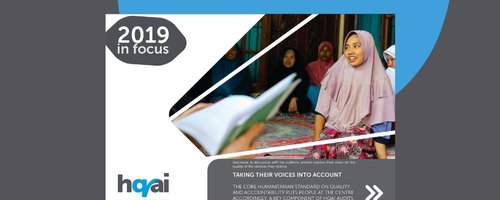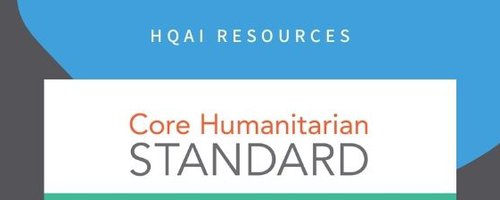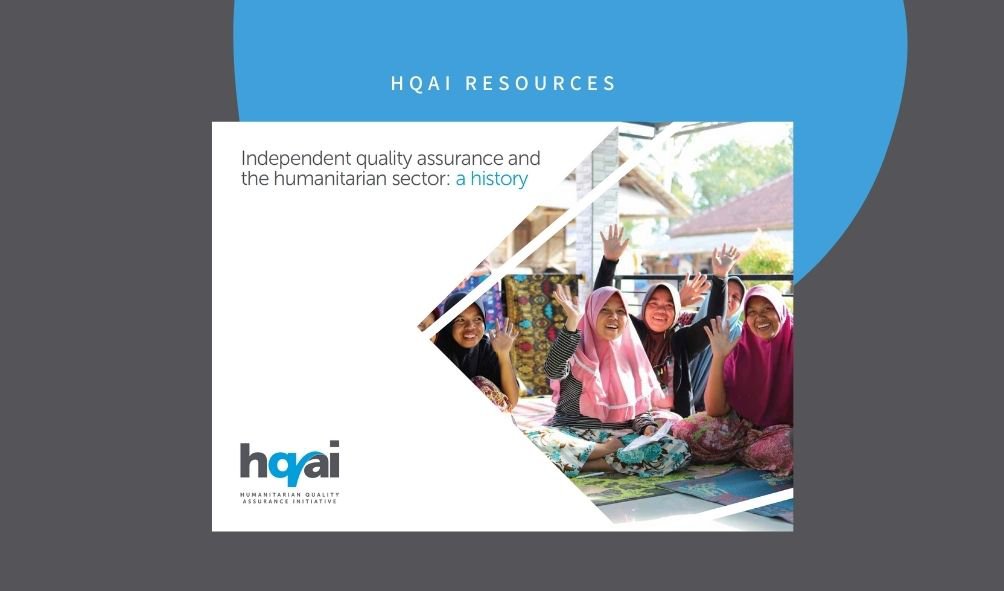We are here for good reasons
We are here for good reasons
December 2019
We are proud to publish a document that explains how we got from the JEEAR to here. Launched in 2015, HQAI is the culmination of many decades of work spent developing a mechanism to measure the extent to which humanitarian service providers are fit for purpose and their work accountable to some of the world’s most vulnerable people, but also to their other stakeholders – donors, host populations, and, indeed, their own staff.
Getting to such a point has been a journey. One that the authors of one of the key documents in the history of humanitarian accountability, the 1996 Joint Evaluation on Emergency Assistance to Rwanda (JEEAR), could scarcely have imagined when they concluded: “The current mechanisms for ensuring that NGOs adhere to certain professional standards are inadequate.” Here's the history of independent quality assurance and the humanitarian sector.
Executive summary
In September 2000 in an issue dedicated to globalisation, The Economist questioned the legitimacy of those organisations involved in the antiglobalisation protests of the time. Its editorial column read:
“The increasing clout of NGOs […] raises an important question: who elected [them]? Bodies such as these are, to varying degrees, extorting admissions of fault from law-abiding companies and changes in policy from democratically elected governments. They may claim to be acting in the interests of the people — but then so do the objects of their criticism, governments and the despised international institutions. In the West, governments and their agencies are, in the end, accountable to voters. Who holds the activists accountable?”
This was not the first time the accountability of non-governmental organisations and actors had been questioned, nor would it be the last. Indeed, much thinking over the past 30 years has been poured into trying to understand the power dynamics in which NGOs operate. Yet, close to a decade after The Economist leader was published, such questions persist: both international and national NGOs remain the focus of intense scrutiny over their power, performance, legitimacy and accountability.
For those working in humanitarian contexts, these questions have become urgent: the negative consequences of responses in Rwanda, the Democratic Republic of the Congo, Haiti and Pakistan, and the ongoing and highly publicised sexual abuse scandals involving staff from some of the world’s biggest NGOs, have seen the erosion of public trust in the humanitarian system. Médecins Sans Frontières perhaps best articulated these concerns in 2014, when the organisation published a report which stated: “While the humanitarian system has grown massively in recent years, this has not led to a proportionate improvement in performance during emergencies”
Yet, in spite of such criticism, the sector is booming: between 1977 and 2007, the percentage of Official Development Assistance (ODA) spent on humanitarian activity rose from 3% to 14%. In 2017, it was estimated that humanitarian funding topped US$27.3 billion. Greater funding has led to demands for more transparency in the way in which donor money is being spent. But the increased role and power of humanitarian organisations in international affairs – and the increasing media glare under which humanitarian actors operate – has, over the past three decades, resulted in an evolution in the way in which the humanitarian sector has come to think about who it operates for and how it is held to account. And spearheading that evolution has been efforts to put populations in crisis, those people for whom the humanitarian sector exists, at the heart of the accountability matrix.
As a term, accountability to affected populations (AAP) has come to encompass a wide range of activities that aim to improve humanitarian performance and empower populations to hold humanitarian actors to account – much of which has since been incorporated into the nine commitments of the Core Humanitarian Standard on Quality and Accountability (CHS). Indeed, there is now significant evidence to suggest that accountability to affected populations improves the overall quality of the response. And few working in the humanitarian sector (or, indeed, outside it) would argue against such efforts. Accountability is held to matter “because we are morally obliged to use the resources held in trust for other people according to the wishes and best interests of those people. We are also morally obliged to show that we have done so”. Yet, while almost every humanitarian organisation working today is at pains to emphasise their commitment to accountability to affected populations, far fewer are able to objectively demonstrate those commitments are being met.
Launched in 2015, the Humanitarian Quality Assurance Initiative (HQAI) is the culmination of many decades of work spent developing a mechanism to measure the extent to which humanitarian service providers are fit for purpose and their work accountable to some of the world’s most vulnerable people, but also to their other stakeholders – donors, host populations, and, indeed, their own staff. Through a system of independent quality assurance that assesses the degree to which implementation of the CHS (and, therefore, best practice on accountability to affected populations) has been successful, HQAI is able to determine the performance of humanitarian actors, and suggest ways in which they can improve.
Getting to such a point has been a journey. One that the authors of one of the key documents in the history of humanitarian accountability, the 1996 Joint Evaluation on Emergency Assistance to Rwanda (JEEAR), could scarcely have imagined when they concluded: “The current mechanisms for ensuring that NGOs adhere to certain professional standards are inadequate.” This document explains how we got from the JEEAR to here.
Other resources

HQAI's strategy
HQAI's 2020-2023 roadmap to enhance quality and accountability in the sector.

2019 in focus
The flagship publication is a punch overview of 2019, HQAI's activities and impact.

The Core Humanitarian Standard
The standard we audit against.
Category
